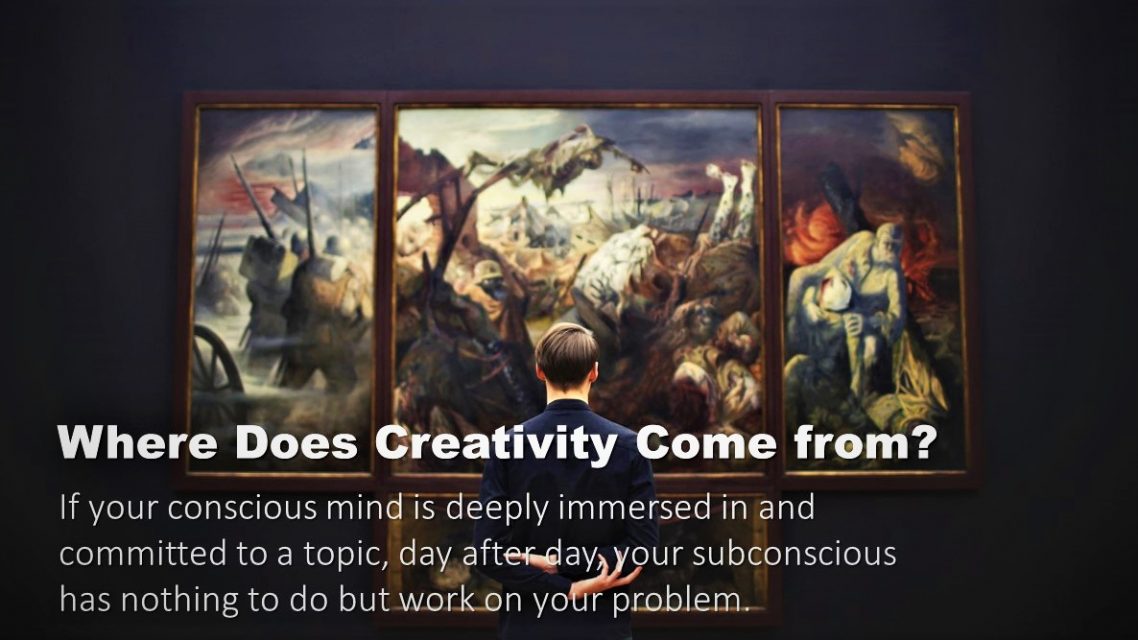“I saw in a dream a table where all the elements fell into place as required,” said Dmitri Mendeleev (1834–1907) after discovering Periodic Table in his dream.
You probably heard of people who had ideas while they were routinely walking or showering, in casual conversations with friends, watching movie or driving or doing some other mundane task that doesn’t involve super attentive brain function.
A solution may struck you why you are not consciously thinking about that problem and engaged in an activity like driving or showering.
To a large extent, creativity comes out of the subconscious. Creative ideas come from the silence between thoughts. This is why you may experience eureka moment when you are not thinking about the problem that you have been mulling over.
But for it to happen, you need to prime your mind. If your conscious mind is deeply immersed in and committed to a topic, day after day, your subconscious has nothing to do but work on your problem.
Richard Hamming, a pioneer of computer science and telecommunications who had the privilege of interacting with such luminaries as the physicists Richard Feynman and Robert Oppenheimer provided timeless advice on how to achieve this:
So the way to manage yourself is that when you have a real important problem you don’t let anything else get the center of your attention—you keep your thoughts on the problem. Keep your subconscious starved so it has to work on your problem, so you can sleep peacefully and get the answer in the morning, free.
This is exactly what happened with Mendeleev. His waking mind was so vigorously occupied with the quest for a classification system that would order the elements. “It’s all formed in my head, but I can’t express it,” he lamented. It was only when he tapped into his subconscious under the spell of sleep that the disjointed pieces fell into a pattern and the larger picture expressed itself. “Awakening, I immediately wrote it down on a piece of paper,” he said. Periodic Table was thus born.
So, where do creative ideas come from? From the silence, the precious gap between your conscious thoughts. But for that to happen, your conscious mind needs some guidance, some priming.
To a large extent, creativity comes out of the subconscious. Creative ideas come from the silence between thoughts.
It is essential to take relaxation breaks from the routine tasks. As you allow your busy mind to relax, some areas of your brain, especially in your frontal lobe become more active. The neurochemical refreshment happens during this state of apparent quiescence. This cleansing brings about many important functions of brain such as creative solving, memory formation and recall. The end results culminates into a higher states of awareness from where new ideas spring forth.
Although the biological and chemical underpinnings of neurological mechanisms is unclear, this priming of your brain in states of increase awareness is the reason why creative problem solving to one problem can occur in a person who is focused on some other task. For instance, a solution may struck you why you are not consciously thinking about that problem and engaged in an activity like driving or showering.
Creativity, therefore, happens at a different level of awareness, either it is mind-wandering state or unconsciously slipping to heightened states of awareness that cuts you off from everyday task oriented consciousness. Sometimes, external props aid in this process, which is why artists engage in smoking, drinking a certain type of coffee in a certain type of cup or listening to music, or routine walk in the woods etc. These activities prime the mind to different dimension of consciousness that is not usually accessible in when we try to think about solutions to a problem.
Have you read?





